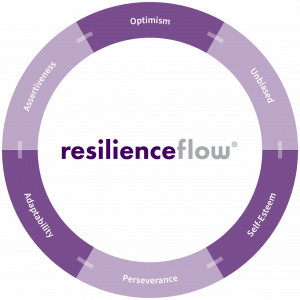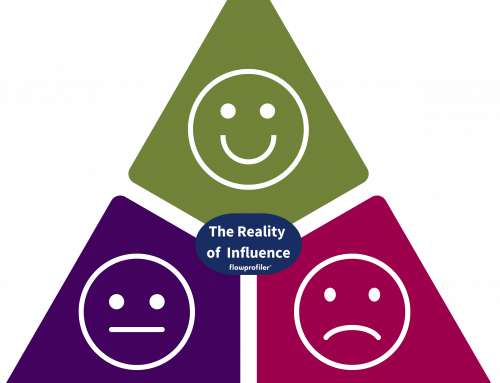Resilience and grit are two terms often used interchangeably. But are these superpowers truly the same thing?
Resilience and grit are two important qualities that are crucial for personal and professional success. While these concepts are distinct, they are closely related and can work together to help individuals achieve their goals. In this article, we will explore the relationship between resilience and grit and provide some practical ways that individuals can cultivate these qualities.
Resilience is the ability to bounce back from setbacks, adapt to change, and thrive in the face of adversity. This quality involves the ability to overcome challenges and emerge stronger from difficult experiences. Resilience is not an innate trait but rather a skill that can be developed through deliberate practice.
On the other hand, grit refers to the perseverance and passion required to achieve long-term goals. This quality involves sustained effort and a willingness to persist in the face of obstacles and setbacks. Like resilience, grit is not an innate trait but can be developed through effort and practice.
 Resilience and grit are closely related because both involve persistence in the face of challenges and setbacks. In fact, researchers argue that grit is a key component of resilience because it involves the ability to persist and remain committed to one’s goals even when facing challenges and setbacks. Resilience is also important for developing grit because it helps individuals to develop the strength and resilience necessary to persist in the face of obstacles and setbacks.
Resilience and grit are closely related because both involve persistence in the face of challenges and setbacks. In fact, researchers argue that grit is a key component of resilience because it involves the ability to persist and remain committed to one’s goals even when facing challenges and setbacks. Resilience is also important for developing grit because it helps individuals to develop the strength and resilience necessary to persist in the face of obstacles and setbacks.
By developing both qualities, individuals can cultivate the strength, perseverance, and passion necessary to achieve their goals and thrive in the face of adversity.
Research has shown that resilience and grit are important predictors of success in various domains, including academic achievement, career success, and athletic performance. Individuals who are resilient and gritty are more likely to persevere in the face of challenges, overcome obstacles, and achieve their goals. Moreover, cultivating resilience and grit can have positive effects on mental health and well-being. By cultivating these qualities, individuals can not only achieve success in their personal and professional lives but also improve their overall well-being.
4 tips to cultivate resilience and grit?
- Practice: One way is through deliberate practice and effort. Individuals can intentionally seek out challenging experiences and work to overcome them. By doing so, they can develop the skills and mindset necessary to bounce back from setbacks and persist in the face of obstacles.
- Growth mindset: Another way to cultivate resilience and grit is through the deve
 lopment of a growth mindset. A growth mindset involves the belief that one’s abilities and talents can be developed through effort and hard work. By adopting a growth mindset, individuals can develop the resilience and grit necessary to persevere in the face of challenges and setbacks.
lopment of a growth mindset. A growth mindset involves the belief that one’s abilities and talents can be developed through effort and hard work. By adopting a growth mindset, individuals can develop the resilience and grit necessary to persevere in the face of challenges and setbacks. - Assess to develop: The use of assessments like flowprofiler®’s resilienceflow® can also be helpful in developing resilience and grit. The resilienceflow® assessment, which is part of the suite of flowprofiler® assessments, measures the six dimensions that underpin resilience in the workplace, including perseverance, a key aspect of workplace grit. The flowprofiler® interpreter training series provides detailed information on how to administer and interpret the resilienceflow® assessment.
- Social support: Finally, cultivating resilience and grit also involves the development of social support networks. Social support can provide individuals with the encouragement and resources necessary to overcome challenges and achieve their goals.
Resilience and grit are two distinct but closely related qualities that play important roles in personal and professional success. By developing both qualities through deliberate practice, effort, and the cultivation of a growth mindset and social support networks, individuals can cultivate the strength, perseverance, and passion necessary to achieve their goals and thrive in the face of adversity. So, take the time to develop the resilience and grit of your people, and watch their personal and professional success soar.
Please reach out to us at hello@flowprofiler.com with your questions.
References:
Bonanno, G. A. (2004). Loss, trauma, and human resilience: Have we underestimated the human capacity to thrive after extremely aversive events?. American psychologist, 59(1), 20–28. https://doi.org/10.1037/0003-066X.59.1.20
Duckworth, A. L., Peterson, C., Matthews, M. D., & Kelly, D. R. (2007). Grit: Perseverance and passion for long-term goals. Journal of Personality and Social Psychology, 92(6), 1087–1101. https://doi.org/10.1037/0022-3514.92.6.1087
Dweck, C. S. (2010). Mindset: How you can fulfill your potential. Constable.
flowprofiler® technical manual 2023.
Greitens, E. (2015). Resilience: Hard-won wisdom for living a better life. Houghton Mifflin Harcourt.
Masten, A. S. (2001). Ordinary magic: Resilience processes in development. American Psychologist, 56(3), 227–238. https://doi.org/10.1037/0003-066X.56.3.227
Masten, A. S. (2014). Global perspectives on resilience in children and youth. Child Development, 85(1), 6–20. https://doi.org/10.1111/cdev.12205
Southwick, S. M., Bonanno, G. A., Masten, A. S., Panter-Brick, C., & Yehuda, R. (2014). Resilience definitions, theory, and challenges: Interdisciplinary perspectives. European Journal of Psychotraumatology, 5, 25338. https://doi.org/10.3402/ejpt.v5.25338
Stambulova, N. B., Alfermann, D., Statler, T., & Côté, J. (Eds.). (2017). ISSP manual of sport psychology. Routledge.



